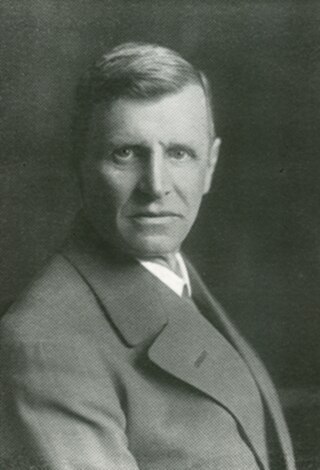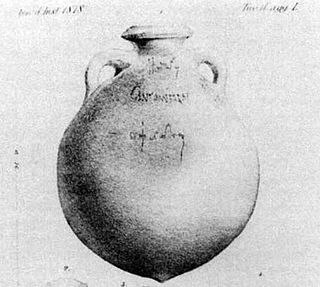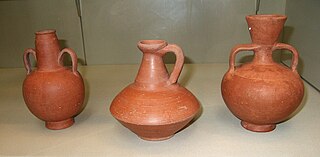Related Research Articles

The Iazyges were an ancient Sarmatian tribe that traveled westward in c. 200 BC from Central Asia to the steppes of modern Ukraine. In c. 44 BC, they moved into modern-day Hungary and Serbia near the Dacian steppe between the Danube and Tisza rivers, where they adopted a semi-sedentary lifestyle.

Africa was a Roman province on the northern coast of what is now known as the African continent. It was established in 146 BC, following the Roman Republic's conquest of Carthage in the Third Punic War. It roughly comprised the territory of present-day Tunisia, the northeast of Algeria, and the coast of western Libya along the Gulf of Sirte. The territory was originally and still is inhabited by Berber people, known in Latin as Mauri, indigenous to all of North Africa west of Egypt. In the 9th century BC, Semitic Phoenicians from Western Asia built settlements along the coast of the Mediterranean Sea to facilitate shipping. Carthage, rising to prominence in the 8th century BC, became the predominant of these.

Hans Dragendorff was a Baltic German scholar who introduced the first classification system for the type of Ancient Roman pottery known as Samian ware or Terra sigillata, in 1896, using type numbers. His scheme was based on the varying forms the vessels took and although it has since been augmented and refined by others, it is still common to refer to 'Dragendorff type 37' bowls, for example.

Terra sigillata is a term with at least three distinct meanings: as a description of medieval medicinal earth; in archaeology, as a general term for some of the fine red Ancient Roman pottery with glossy surface slips made in specific areas of the Roman Empire; and more recently, as a description of a contemporary studio pottery technique supposedly inspired by ancient pottery. Usually roughly translated as 'sealed earth', the meaning of 'terra sigillata' is 'clay bearing little images', not 'clay with a sealed (impervious) surface'. The archaeological term is applied, however, to plain-surfaced pots as well as those decorated with figures in relief.

A titulus pictus is an ancient Roman commercial inscription made on the surface of certain artefacts, usually the neck of an amphora. Typically, these inscriptions were made in red or black paint. The inscription specifies information such as origin, destination, type of product, and owner. Tituli picti are frequent on ancient Roman pottery containers used for trade. They were not exclusively used for trade. They were also used to provide easily recognizable advertisements and may have served as insurance if a good was damaged in some way. There are around 2,500 tituli picti recorded in CIL IV.
Michael Gordon Fulford, is a British archaeologist and academic, specialising in the British Iron Age, Roman Britain and landscape archaeology. He has been Professor of Archaeology at the University of Reading since 1993.
Martin Vinzenz Baldur Paul Maria (Martin) van Hees is a Dutch philosopher.

African red slip ware, also African Red Slip or ARS, is a category of terra sigillata, or "fine" Ancient Roman pottery produced from the mid-1st century AD into the 7th century in the province of Africa Proconsularis, specifically that part roughly coinciding with the modern country of Tunisia and the Diocletianic provinces of Byzacena and Zeugitana. It is distinguished by a thick-orange red slip over a slightly granular fabric. Interior surfaces are completely covered, while the exterior can be only partially slipped, particularly on later examples.

Pottery was produced in enormous quantities in ancient Rome, mostly for utilitarian purposes. It is found all over the former Roman Empire and beyond. Monte Testaccio is a huge waste mound in Rome made almost entirely of broken amphorae used for transporting and storing liquids and other products – in this case probably mostly Spanish olive oil, which was landed nearby, and was the main fuel for lighting, as well as its use in the kitchen and washing in the baths.

The Achaeans were one of the four major tribes into which Herodotus divided the Greeks, along with the Aeolians, Ionians and Dorians. They inhabited the region of Achaea in the northern Peloponnese, and played an active role in the colonization of Italy, founding the city of Kroton. Unlike the other major tribes, the Achaeans did not have a separate dialect in the Classical period, instead using a form of Doric.

Slovakia was partly occupied by Roman legions for a short period of time. Marcomannia was a proposed province of the Roman Empire that Emperor Marcus Aurelius planned to establish in this territory. It was inhabited by the Germanic tribes of Marcomanni and Quadi, and lay in the western parts of the modern states and Slovakia and the Czech Republic (Moravia). Part of the area was occupied by the Romans under Marcus Aurelius between 174 AD and 180 AD. His successors abandoned the project, but the people of the area became steadily Romanized during the next two centuries. The Roman influence was disrupted with the invasions of Attila starting around 434 AD and as Slavic people later began to move into the area.
Praetorium Agrippinae was a Roman settlement in the province of Lower Germania, in the area of the Cananefates, located in modern-day Valkenburg, Netherlands. It was an army encampment on the Old Rhine, on the northern border of the Roman Empire, the limes. Praetorium Agrippinae is mentioned on the Tabula Peutingeriana between the castella of Matilo in the east and Lugdunum Batavorum to the west.

Elvira Louiza Helene Fölzer was a German classical archaeologist. With a thesis on Ancient Greek vases, she was the first woman to earn a doctorate at the University of Bonn. As a researcher at the Provincial Museum in Trier, she went on to investigate the origins of the city's terra sigillata Roman pottery.
Katherine Dunbabin is an archaeologist specialising in Roman art and Professor Emerita of Classics at McMaster University.
Alex Mullen is an ancient historian, sociolinguist and Roman archaeologist. She is currently an associate professor in Classical Studies at the University of Nottingham and a fellow of All Souls College, Oxford.
Brenda Dickinson is a British archaeologist. She is a leading scholar in the study of Roman pottery, and a specialist in Roman potter's stamps.
Elisabeth Ettlinger, was a German-born archaeologist and academic, who specialised in archaeology of the Roman provinces and Roman Switzerland. From 1964 to 1980, she taught at the University of Bern, having emigrated to Switzerland in the 1930s to escape Nazi Germany. Her research centred on Roman ceramics such as Terra Sigillata, and she co-founded Rei Cretariae Romanae Fautores, a learned society dedicated to Roman pottery: she was its secretary, vice-president and then served as its president from 1971 to 1980. From September 1963 to June 1964, she was a member of the Institute for Advanced Study in Princeton, New Jersey.
Kimberly D. Bowes is an American archaeologist who is a professor of Classical Studies at the University of Pennsylvania. She specializes in archeology, material culture and economics of the Roman and the later Roman world. She was the Director of the American Academy in Rome from 2014–2017. She is the author of three monographs.

Aliso was a military and civilian colony in ancient Germany, built by the emperor Augustus near present-day Haltern am See, when he wanted to create the Roman province of Germania.
Sander Ernst van der Leeuw is an archaeologist, historian, academic, and author. He is an Emeritus Foundation Professor of Anthropology and Sustainability, Director Emeritus of the Julie Ann Wrigley Global Institute of Sustainability, and the Founding Director of School of Human Evolution and Social Change at Arizona State University.
References
- 1 2 3 "Astrid Van Oyen | Homerton College". www.homerton.cam.ac.uk. Retrieved 2021-08-27.
- ↑ Van Oyen, Astrid (2014). Rethinking terra sigillata : an archaeological application of actor-network theory (Ph.D. thesis). University of Cambridge.
- ↑ Van Oyen, Astrid (6 November 2020). How Things Make History : The Roman Empire and its terra sigillata Pottery. pp. x. ISBN 978-90-485-2993-3. OCLC 1248758854.
- ↑ "Astrid Van Oyen". Cornell Research. 2020-07-09. Retrieved 2021-08-27.
- ↑ Cable, Robert (2019-03-12). "Storage and Empire". Stanford Humanities. Retrieved 2021-08-27.
- ↑ Leitch, Victoria (2018). "A. VAN OYEN, HOW THINGS MAKE HISTORY: THE ROMAN EMPIRE AND ITS TERRA SIGILLATA POTTERY (Amsterdam Archaeological Studies 23). Amsterdam: Amsterdam University Press, 2016. Pp. x + 174, illus. isbn 9789462980549. €79.00". Journal of Roman Studies. 108: 246–247. doi:10.1017/S0075435818000163. ISSN 0075-4358. S2CID 165967420.
- ↑ Eck, Caroline van (2018). "Objects, Romans, materialities". Antiquity. 92 (364): 1115–1117. doi: 10.15184/aqy.2018.130 . ISSN 0003-598X.
- ↑ "The Socio-Economics of Roman Storage: Agriculture, Trade, and Family". American Journal of Archaeology. 2021-06-07. Retrieved 2021-08-27.
- ↑ Trainor, Conor P. (2021). "ASPECTS OF STORAGE AT ROME - (A.) Van Oyen The Socio-Economics of Roman Storage. Agriculture, Trade, and Family. Pp. xviii + 284, ills, maps, colour pls. Cambridge: Cambridge University Press, 2020. Cased, £85, US$110. ISBN: 978-1-108-49553-0". The Classical Review. 71 (1): 152–154. doi:10.1017/S0009840X20002085. ISSN 0009-840X. S2CID 232223576.
- ↑ "Marzuolo Archaeological Project (MAP) | CIAMS Cornell Arts & Sciences". archaeology.cornell.edu. Retrieved 2021-08-27.
- ↑ Trimble, Jennifer; Russell, Ben; Oyen, Astrid Van; Leidwanger, Justin (2021). "Welcome from the new editors". Journal of Roman Archaeology. 34 (1): 1–2. doi: 10.1017/S1047759421000398 . ISSN 1047-7594.
- ↑ "Editorial board". Cambridge Core. Retrieved 2021-08-27.